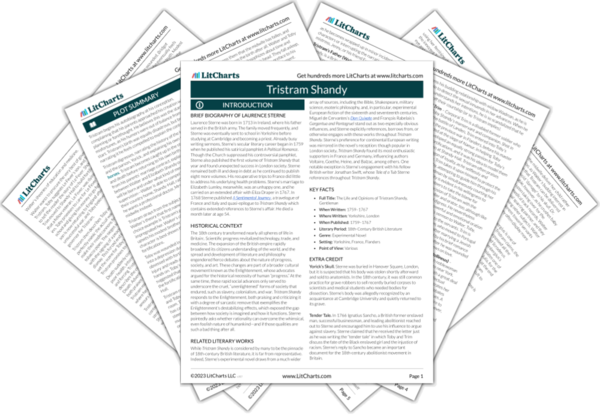In classic Shandean style, Tristram’s digression has revealed to the reader much about the parson’s character without actually having any direct relevance to the plot: the reader will never learn whether or not the parson bought himself another, better horse after wisely investing in the midwife’s training. The point of this anecdote, rather, is to illustrate both the parson’s character and Tristram’s conception of noble behavior, which requires being true to oneself even at the cost of seeming ridiculous.
